Oregon Forest Laws
The Oregon Forest Practices Act (OFPA) governs forest management practices on state and private forestlands in the state. When the OFPA was signed into law in 1971 by Gov. Tom McCall, it was the first law of its kind in the nation. Since then, it has been updated numerous times to reflect new science and technologies. The most recent and significant update occurred in 2022 with the signing of the Private Forest Accord, a cooperative agreement between environmental groups and private timberland owners to increase protections for aquatic systems and wildlife.
The OFPA sets standards for all commercial activities involving the establishment, management, or harvesting of trees and gives the Board of Forestry primary responsibility to interpret the FPA and set rules for forest practices.
The Board of Forestry
The Oregon Board of Forestry is a seven-member citizen board appointed by the Governor and confirmed by the state Senate. The Board oversees all matters of forest policy within Oregon. That means they adopt rules regulating forest practices and supervise ODF managers.
Oregon Department of Forestry
Foresters employed by the Oregon Department of Forestry (ODF), are responsible for reviewing pre-operations plans, overseeing operations, ensuring reforestation, investigating complaints and enforcing corrective actions when violations occur. ODF works with landowners and operators to help them comply with the requirements and avoid problems, and when necessary, issue citations leading to civil or criminal penalties.
ODF also manages, approximately 745,000 acres of state forestland. These are multi-use forests, providing timber harvests, public recreation, and wildlife habitat. Of these, 613,000 acres are managed on behalf of the Forest Trust Lands. The management focus of these lands is to actively manage them in a sound environmental manner to provide sustainable timber harvest and revenue to the state, counties and local taxing districts OAR 629-035-0020 (2). When harvest occur, 64 percent of the revenues are returned to the counties. ODF retains the remaining 36 percent as a management fee to cover the costs of public recreation, wildfire protection and administration.
ODF reports annually to the counties on how these lands are managed. These reports include information on timber harvests and revenues, replanting, wildfire response, trail and road upkeep, and other management activities.
2022 Forest Trust Lands Annual Report
2021 Forest Trust Lands Annual Report
2020 Forest Trust Lands Annual Report
2019 Forest Trust Lands Annual Report
2018 Forest Trust Lands Annual Report
2017 Forest Trust Lands Annual Report
The Council of Forest Trust Land Counties (CFTLC)
Council of Forest Trust Land Counties is made up of County Commissioners from the 15 Forest Trust Land Counites. They protect the trust and contractual relationship between the forest trust land counties and the State of Oregon. They also support sound, active management of county forest trust lands in order to support long-term community sustainability. The counties are contractual partners in state forest management.
Local Forest Sector
Hundreds of local businesses are engaged in state forest management. From logging and hauling to replanting and roadbuilding, local contractors help ODF keep these lands safe and productive. Local wood manufacturing operations provide markets for state forest timber and generate much needed building materials and paper products. More information on the scale and contribution of the forest sector built around state forests can be found here.

